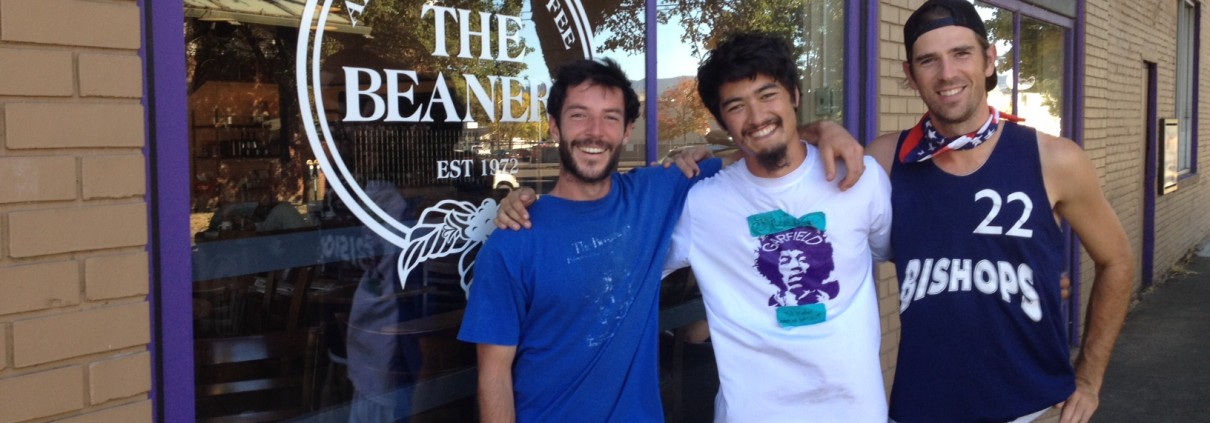Small Steps to Big Changes
We live in a world where information is available at the click of a button, where the news cycle is 24/7, and where we can get any kind of entertainment we want at the speed of Comcast. How cool is that? (Except for the Comcast thing, those guys suck.)
The more we experience it, the more instant gratification becomes expected. In 2015, it is the norm. If something doesn’t happen right away, we get pissed. Even the microwave seems to take too long.
Here’s the thing (there’s always a thing): this is all consumption. We are ravenous consumers. We can devour intricately designed movies, glance at a painting in a gallery for a few seconds and think we know what it’s about, eat a fully-prepared meal in five minutes or less.
Creation, as opposed to consumption, works on a completely different time scale. I’ve written this before, but good work takes time. Almost anything worth actually making requires patience and persistence.
That movie you watched for two hours, then forgot about? Look at how many people are in the credits. That thing took forever to make. The painting you glanced at in the gallery? It probably took dozens or hundreds of hours to create. The old masters would spend months perfecting a painting. That meal you scarfed down? It might have shown up quickly on your plate, but it is the product of a long line delicate processes, not to mention having actually grown from the ground (we hope).
Okay, so we all should appreciate the things around us more. Big deal. What I am trying to point to here is that these things only exist because people are willing to put long hours into making them, and that is a worthy endeavor.
But it can be so daunting to try to create something big. Writing a book? That’s 50,000 words! If you think about how long it takes to write 500 or 1,000 words, you’ll come up with a large number of hours to write the whole thing. That number will stare you in the face, paralyze you, and keep you from even getting started. The medusa of creativity.
Nothing is created overnight, especially not books or paintings or fresh vegetables. They are created over a long period of time through consistent, dedicated effort. There is nothing that requires being a genius or having superhuman traits to make this happen. Sure, maybe being a genius means you can write the book in a medium period of time through consistent, dedicated effort. But still not overnight.
I’ve been experiencing this whole-hog the last few months. I’ve been gradually chipping away at some big projects, with practically nothing tangible to show for it. I was working on my book, which is currently tucked away in my computer. I’m working on my book proposal, which is how you find an agent to sell the book. I’ve been working on my business teaching meditation to offices in Portland. I’ve been building two websites, one for the business, and this one. I’ve been learning how to do all these things, because I’m not an expert in any of them.
And even since finishing the book, I’ve been writing every day. I’ve put up a few new blog posts in the last couple weeks, but mostly I’ve been working on longer pieces to publish on my website as e-guides. None of them are finished. I still don’t have anything tangible to show for it.
But that’s okay. I’m getting close. All these projects are slowly becoming more and more real. They are all a small step closer to completion each day. Each one is a big project on its own, and doing them all together means they all take longer. I’m okay with that. My writing will be on slow burn for the rest of my life. If I continue to write 1,000 words a day, and maybe half of them are usable, that’s the equivalent of writing thirty books in the next ten years. THIRTY BOOKS.
Of course there are reasons I almost definitely won’t have thirty books published in the next ten years, but that’s not the point. I never knew whether I’d be able to write one or two books in my lifetime. Now I know exactly how to write as many as I want.
It doesn’t have to be writing. This can be anything we love. Art, music, fitness, building furniture, reading, knitting, anything. The reason we don’t get really good at things or produce vast quantities of high-quality material is that we don’t stick with them long enough. We get distracted or bored. We find something else to do. Anything we make into a daily practice is something we can perfect and make special in our lives. Here is a guy who played ping-pong every day for a year.
It doesn’t have to be something we’re already good at. It doesn’t have to be something we have already been taught. It can be something we never thought we could do. I never considered myself a writer. I was always into science and math, not English. Now that I’m writing every day, it doesn’t make sense to call myself anything but a writer. If I keep up the practice and continue to strive and improve, eventually I’ll even make a living doing it. But that won’t happen until most of the hard, slow, dedicated work is already done. Until I’ve been writing every day for ages, and it seems like second nature.
What do you dream of accomplishing? What do you wish you could do, but never thought you could? Well, that dream is not going to come true overnight. But it absolutely, one-hundred percent, can come true with slow, consistent practice. The best time to plant a tree is twenty years ago. The second best time is today. Better get started!




